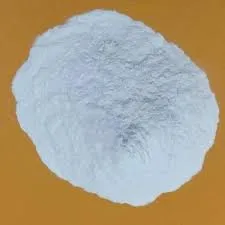
nóv . 10, 2024 19:27 Back to list
Exploring the Variability in HPMC Grades and Their Applications
Understanding the Grades of HPMC An Overview
Hydroxypropyl methylcellulose (HPMC) is a versatile polymer that has garnered significant attention in various industries, including pharmaceuticals, food, and cosmetics. Its unique properties make it an ideal choice for a wide range of applications, especially as a thickening agent, emulsifier, and film-forming agent. One important aspect to consider when working with HPMC is its grading system, which is pivotal in determining the polymer's suitability for specific applications.
The grades of HPMC are primarily defined by the degree of substitution, the viscosity of the polymer solution, and the specific molecular weight of the compounds involved. These parameters influence the performance characteristics of HPMC, such as gel formation, solubility, and consistency in formulations.
Understanding the Grades of HPMC An Overview
2. Viscosity Grades HPMC is available in various viscosity grades, which are determined by measuring the viscosity of a 2% aqueous solution of HPMC at 20°C. The viscosity is indicative of the polymer's molecular weight and the configuration of the polymer chains. Lower viscosity grades tend to provide smoother textures and are often used in cosmetic formulations to maintain a lightweight feel. In contrast, higher viscosity grades are typically utilized in applications where a more substantial gel-like texture is necessary, such as in pharmaceutical gels or certain food products.
grades of hpmc

3. Molecular Weight The molecular weight of HPMC significantly influences its functional properties. Higher molecular weight HPMC can create more robust gels and emulsions, making it suitable for products that require enhanced stability and texture. This is particularly important in the pharmaceutical industry, where the efficacy of drug delivery systems often hinges on the viscosity and gel-forming abilities of the carrier medium.
4. Applications in Industry The diverse grades of HPMC are applied differently across sectors. In the pharmaceutical industry, specific HPMC grades are employed for controlled-release formulations, acting as a thickening agent in tablet coatings, and as a binder in solid dosage forms. In food, HPMC serves as a stabilizer and emulsifying agent, enhancing texture and prolonging shelf life. The cosmetic industry utilizes HPMC for its film-forming capabilities, providing desired consistencies in lotions and creams.
5. Choosing the Right Grade When selecting an appropriate grade of HPMC for a particular application, it's crucial to consider several factors, including the desired viscosity, compatibility with other ingredients, and the final product’s performance requirements. Manufacturers often conduct trials with various grades to determine the optimal formulation that meets both regulatory standards and consumer expectations.
In conclusion, the grades of HPMC represent a crucial classification that significantly impacts its functionality in diverse applications. Understanding the parameters defining these grades helps formulators and manufacturers select the right type of HPMC for their specific needs, ensuring product performance and quality. As industries continue to develop new formulations, the importance of HPMC's grades will only increase, paving the way for innovative solutions that meet evolving consumer demands.
-
Unlocking the Benefits of HPMC Products: A Gateway to Versatile Applications
NewsAug.07,2025
-
Unleashing the Potential of HPMC Ashland: A Comprehensive Look
NewsAug.07,2025
-
Tile Bonding Cellulose: The Key to Superior Adhesion and Durability
NewsAug.07,2025
-
Hydroxypropyl Methylcellulose Powder: The Versatile Component in Modern Pharmaceuticals
NewsAug.07,2025
-
Hydroxyethyl Cellulose: The Versatile Solution for Various Industries
NewsAug.07,2025
-
Hydroxyethyl Cellulose (HEC): The Versatile Polymer for Various Applications
NewsAug.07,2025







